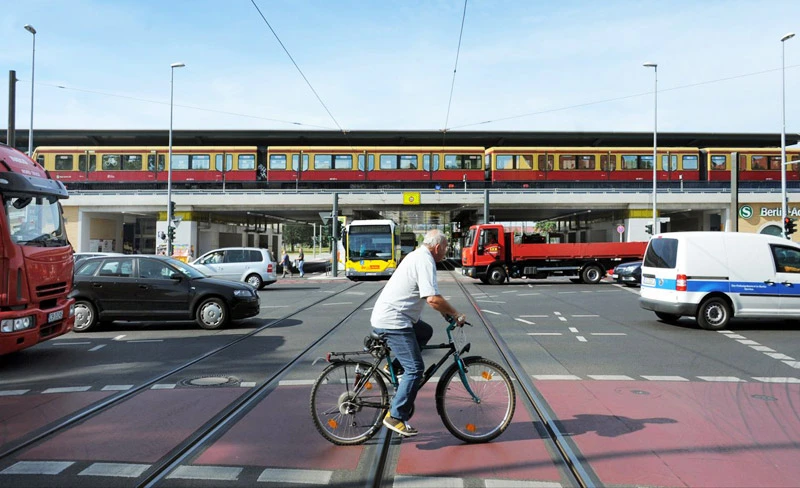Future Mobility
DLR project “Streetlife” links data of various transportation means // HU analyses social ramifications of driver assistance systems
Cities are growing. Motorised private transport in particular puts a strain on them. Those who switch to local public transportation, to bikes or car-sharing reduce CO2 pollution and are in many cases able to reach their destination faster. So far, there has been a lack of tools showing users how to better reach their destination in a “multimodal” way, that is, using different transportation means.
This is where the research project “Streetlife” comes into play. Their goal: to develop an IT-platform which navigates its users to their destination in an eco-friendly and reliable way. After filling in the destination and preferences such as time, costs or environmental factors, the smartphone displays a range of options.
“By linking data of various transportation means together in an app, the user is provided with present alternatives and that way, hopefully, more people will switch to eco-friendly transportation,” explains Philipp Gilka, research assistant at the Institute of Transport Research of the German Aerospace Centre (DLR). The system will be implemented simultaneously in Berlin, the Finnish city of Tampere, and in Rovereto, Italy. The coordination is carried out by the Fraunhofer Institute for Open Communication Systems FOKUS.
The DLR in Adlershof is responsible for the pilot tests in Berlin as well as for evaluation. The tasks ahead are complex: the schedules of local passenger traffic have to be fed into the system as well as vehicle data of car-sharing providers and bike rental stations – and of course city maps. First tests will commence in 2015 among only a small audience.
A project that points even further into the future is currently being realized under the direction of Barbara Lenz, professor at the Geography Department of the Humboldt-University of Berlin. There, researchers are trying to find out what the social ramifications of “autonomous driving” might be. In the road traffic of the future, the theory goes, selfdriving cars will be all around, equipped with driver assistance systems which the automotive industry is currently researching on.
“We are at an early stage,” staff member Eva Fraedrich concedes. But they want to be at the ready once the first autonomous vehicles are underway. “We have initially evaluated comments on articles about autonomous vehicles from readers online and analysed how the subject is perceived. While the current media coverage is overall very positive, the discussions among readers give a more ambivalent impression,” according to Fraedrich.
Together with colleagues from two other German universities as well as Stanford University, a white paper will be issued in September 2014 which shall serve as a basis for further discussion on the “autonomous” traffic of the future.
By Mirko Heinemann for Adlershof Special
www.geographie.hu-berlin.de/abteilungen/verkehrsgeographie/forschung/autonomesfahren
